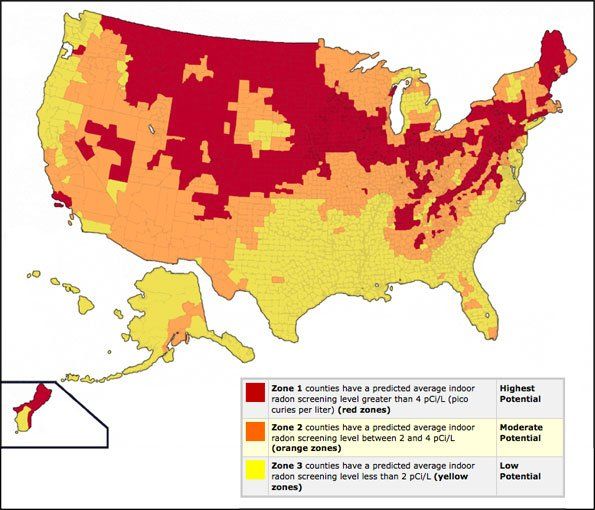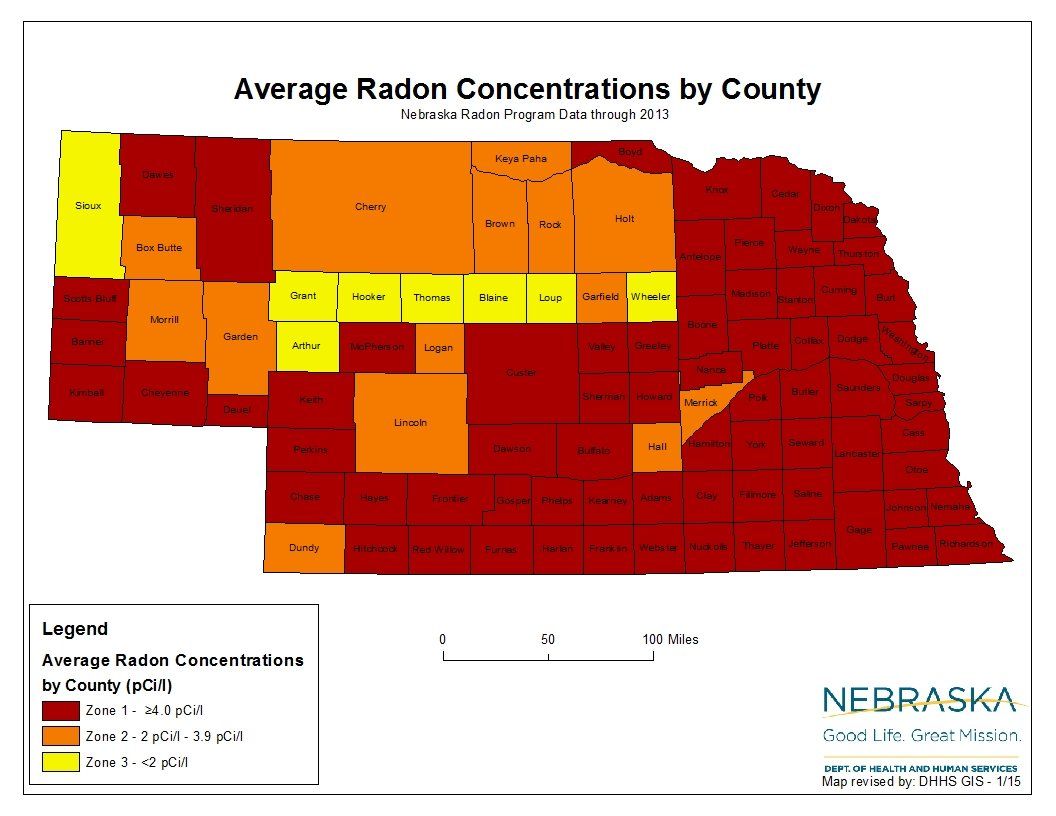EVERYTHING YOU NEED TO KNOW ABOUT RADON
Do you know what Radon is?
- Radon is a gas that is naturally occurring in the environment. It is formed by the decay of uranium in rocks and soil. It can enter a building through small cracks in the foundation, cracks in the walls, and other spaces. It is found in moderate amounts outdoors but can reach higher levels indoors. If you suspect that your home is exposed to radon, you should seek medical help to determine whether a test is necessary.
- - There are many ways to test for radon. It's important to remember that every house has some amount of radon in its air, and the levels in two houses next to each other can be drastically different. Luckily, it's very easy to measure radon levels in your home with a radon detector. Bob answers viewers' questions about radon testing and explains why you should test your home.
- - It is important to know that small amounts of radon are normal in homes. You're not likely to have been exposed to it for years. However, if you're living in a house with high levels of radon, you should do a radon test. If you find that your home's EPA Radon level is over 4 picocuries per liter, you should take immediate action.

Radon is responsible for over 20,000 lung cancer deaths each year
- According to the World Health Organization, radon is responsible for more than 15 percent of lung cancer cases around the world. Because of this, the World Health Organization has launched an international project to reduce radon levels in homes. The U.S. Environmental Protection Agency supports the efforts of the WHO. In fact, radon has been linked to more than 20,000 lung cancer deaths each year.
- The environmental health agency estimates that radon is the second leading cause of lung cancer in the United States. It affects everyone and is found in most homes. People who smoke and passively smoke are at a higher risk of getting lung cancer from exposure to radon than those who do not. However, even those who do not smoke are at a greater risk of developing the disease.
- In addition to lung cancer, radon exposure has been linked to other diseases, such as childhood leukemia. While the evidence is mixed and not definitive, radon exposure can be a factor in developing childhood leukemia. Unlike smoking, radon exposure is absorbed through inhalation. It travels a short distance and is unlikely to affect other tissues. The studies on the link between radon and lung cancer came from studies conducted on humans and animals. While the evidence suggests that radon can increase the risk of lung cancer, smokers are more vulnerable.

RADON BRINGING HEALTH RISK TO PEOPLE
U.S. SURGEON GENERAL, RICHARD CARMONA, URGES AMERICANS TO GET THEIR HOMES TESTED FOR RADON
The U.S. Surgeon General, Dr. Richard Carmona, has issued a health warning to Americans on the dangers of radon gas and how it can impact your home's air quality. He recommends that all Americans take precautions by getting their homes tested for radon gas levels in their home, especially as the country becomes warmer throughout the year — which means more people in America will be affected by this pollutant and its potential side effects.

RESEARCHERS SAYS THE EVIDENT LINK OF LUNG CANCER TO RADON IN HOMES
The EPA and the National Cancer Institute published a graphic last year comparing the number of lung cancer deaths caused by radon exposure with those caused by other cancers. The numbers are based on the SEER 2010 mortality data. These figures are not surprising given the fact that radon is a common gas found in all homes.
Lung cancer is an extremely difficult disease to treat. The first step to treating the condition is to remove the radon from the body. This causes a fluid buildup in the chest that can cause shortness of breath and pain. The pleural effusion can spread to the lining of the lung or to the rest of the body. The only way to alleviate the pain is to seek treatment for lung cancer.
Scientists have been examining the relationship between radon and lung cancer for the past four decades. Although the increased risk of lung cancer among miners was noted centuries ago, studies later confirmed the connection. People who work in uranium processing plants and phosphate fertilizers, which contain radium, are also more likely to be exposed to radon.
RADON EXPOSURE CAN IMMENSELY CAUSE LUNG CANCER TO BOTH SMOKERS AND NON-SMOKERS
Lung cancer is caused by the continuous inhalation of radon, which is a naturally occurring gas found in the air. Unlike other pollutants, radon can cause the same symptoms to smokers and non-smokers. When exposed to high levels of radon, a person's risk of developing lung cancer increases by two to six-fold. Moreover, a person's chance of contracting lung disease is nearly 20 times higher than that of a non-smoker.
Although tobacco is the leading cause of lung cancer, radon is the second leading cause of lung cancer in the United States. The reason why radon causes lung cancer is because it's a naturally occurring radioactive gas that seeps into buildings and causes lung damage. It can cause a number of health issues, including asthma, ear infections, and respiratory tract problems.
Besides smoking, radon can cause lung cancer in both smokers and non-smokers. It is important to be aware of the risks associated with radon exposure. For example, there are a number of occupational exposures to radon, including diesel exhaust, chromium, and asbestos. These chemicals can cause lungs to scar from irritation. Lung cancer is the most common cancer diagnosed in people over the age of 70, and there are more than two million new cases each year in the United States.
Sources:
Haynes, William M., ed. (2011). CRC Handbook of Chemistry and Physics (92nd ed.). Boca Raton, FL: CRC Press. p. 4.122. ISBN 1439855110
Kusky, Timothy M. (2003). Geological Hazards: A Sourcebook. Greenwood Press. pp. 236–239. ISBN 9781573564694.
14614 Grover Street, Suite 300
Louiseville, KY 68144
Navigation
Navigation
Services
Working hours
- Mon - Fri
- -
- Sat - Sun
- Closed
Working hours
- Mon - Wed
- -
- Thu - Sat
- -
- Sunday
- -
Copyright Elite Radon Mitigation Louisville | Proudly Powered by Snapps